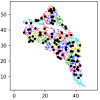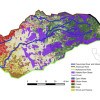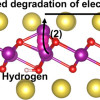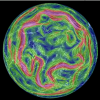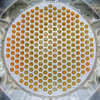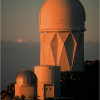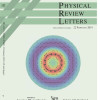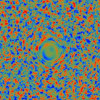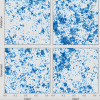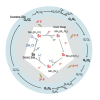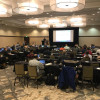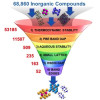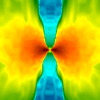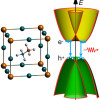Science News
Deep Learning Expands Study of Nuclear Waste Remediation
A research collaboration between Berkeley Lab, Pacific Northwest National Laboratory, Brown University, and NVIDIA has achieved exaflop performance with a deep learning application used to model subsurface flow in the study of nuclear waste remediation. Read More »
NERSC Powers Research on Post-Wildfire Water Availability
Scientists at Berkeley Lab recently took a closer look at how wildfires affect California’s watersheds. Computer simulations run at NERSC allowed them to identify the regions in the watershed that were most sensitive to wildfire conditions, as well as the hydrologic processes that are most affected. Read More »
NERSC Resources Help PPPL Team Predict Plasma Pressure in Future Fusion Facilities
Researchers at the Princeton Plasma Physics Laboratory have developed new insights into the physics governing the balance of pressure in the scrape-off layer, the thin strip of gas at the edge of the plasma in a tokamak reactor. Read More »
Hydrogen a Culprit in Capacity Loss of Sodium-Ion Batteries
Using NERSC's Cori system, UC Santa Barbara computational materials scientist Chris Van de Walle and colleagues have uncovered a reason for the loss of capacity that occurs over time in sodium batteries. Read More »
Berkeley Lab Deep Learning Expertise Draws Attention at International Climatology Meeting
Berkeley Lab’s growing expertise in applying machine learning methods to extreme weather event studies led to invitations to present at the 2019 International Meeting on Statistical Climatology, a prestigious event held only every three years. Read More »
Scientists Piece Together the Largest U.S.-Based Dark Matter Experiment
Most of the remaining components needed to fully assemble an underground dark matter-search experiment called LUX-ZEPLIN (LZ) arrived at the project’s South Dakota home during a rush of deliveries in June. Once it is up and running, data captured by the detectors’ electronics will ultimately be transferred to NERSC, LZ’s primary data center, via ESnet. Read More »
Three Sky Surveys Completed in Preparation for Dark Energy Spectroscopic Instrument
It took three sky surveys – conducted at telescopes in two continents, covering one-third of the visible sky, and requiring almost 1,000 observing nights – to prepare for a new project that will create the largest 3D map of the universe’s galaxies and glean new insights about the universe’s accelerating expansion. Read More »
NERSC’s Cori System Reveals Integral Role of Gluons in Proton Pressure Distribution
For the first time, lattice quantum chromodynamics calculations run at NERSC allowed nuclear physicists from the Massachusetts Institute of Technology to determine the pressure distribution inside a proton, taking into account the contributions of the proton’s fundamental particles: quarks and gluons. Read More »
Cleaning Cosmic Microwave Background Data to Measure Gravitational Lensing
Gravity from distant galaxies cause tiny distortions in cosmic microwave background temperature maps - a process called gravitational lensing - which are detected by data analysis software run on supercomputers like the Cori system at NERSC. Unfortunately, this temperature data is often corrupted by foreground emissions from extragalactic dust, gas, and other noise sources that are challenging to model. So Berkeley Lab researchers developed a statistical method for analyzing CMB data that is largely immune to the foreground noise effects.
Read More »
CosmoGAN: Training a Neural Network to Study Dark Matter
A Berkeley Lab-led research group is using a deep learning method known as generative adversarial networks to enhance the use of gravitational lensing in the study of dark matter. Read More »
Superfacility Framework Advances Photosynthesis Research
Researchers have long studied PSII, a protein complex in green plants, algae, and cyanobacteria that plays a crucial role in photosynthesis. Their understanding of this three-billion-year-old biological system is now moving more quickly, thanks to an integrated superfacility framework established between LCLS, ESnet, and NERSC. Read More »
A Breakthrough in the Study of Laser/Plasma Interactions
A new 3D particle-in-cell simulation tool developed by researchers from Lawrence Berkeley National Laboratory and CEA Saclay is enabling cutting-edge simulations of laser/plasma coupling mechanisms that were previously out of reach of standard PIC codes used in plasma research. Read More »
2019 DOE Performance Portability Meeting Breaks New Ground
The 2019 DOE Performance, Portability, and Productivity Annual Meeting once again brought together representatives from national labs, academia, and the vendor community to share ideas, progress, and challenges in achieving performance portability across DOE’s current and future supercomputers. Read More »
Searching for Photocathodes that Convert CO2 into Fuels
As scientists search for new materials to enable the photocatalytic conversion of CO2, a Berkeley Lab team used supercomputing resources at NERSC to perform a massive photocathode search, starting with 68,860 materials and screening them for specific intrinsic properties. Read More »
When Stars Collide: 3D Computer Simulation Captures Cosmic Event
The aftermath of the collision of two neutron stars has been fully captured in a 3D computer model for the first time, thanks to research by University of Alberta astrophysicist Rodrigo Fernández and an international team. Read More »
Revealing Reclusive Recombination Mechanisms in Solar Cell Materials
Researchers at UCSB used NERSC supercomputers to better understand key mechanisms behind the solar conversion efficiencies of hybrid perovskites, which could make these materials even more attractive for photovoltaics. Read More »






